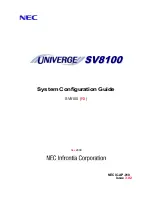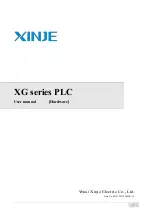
6
Regardless if there is a break in segment 1, 2 or 3, the link will drop on the switches
at both ends. The link fault is passed through the media conversion and is observed at
each end. It acts just like it would if the devices were directly connected.
Additional Gigabit Features
Preferred/Forced Mode
The IE-iMcV-Gigabit Module also includes a Preferred/Forced Modes for Master/Slave
negotiation. Preferred Mode helps determine whether the module should act as a
Master or Slave. Forced Mode should typically only be used when connecting to
some legacy switches, or when there is difficulty establishing a link. The default is
Preferred Mode (S1-1 is ON). This feature is hardware configurable only.
Since most switches today typically function as Masters, IMC Networks recommends
configuring IE-iMcV-Gigabit as indicated in the table.
DIP Switch
Default Setting
S1-1
ON (Preferred),
OFF (Forced)
FX Negotiation on IE-iMcV-Gigabit
The IE-iMcV-Gigabit Module includes a FX Auto Negotiation feature which negotiates
duplex mode. This feature must be enabled or disabled on both ends of the
connection or there may have difficulty establishing a link. If the device being
connected to the IE-iMcV-Gigabit Module does not support Auto Negotiation,
disabling the feature on the IE-iMcV-Gigabit Module forces the link up.
DIP Switch settings for FX AN:
DIP Switch
Default Setting
S1-5
FX AN = ON
AutoCross Feature for Twisted Pair Connection
All twisted pair ports on the IE-iMcV-Gigabit include AutoCross, a feature that
automatically selects between a crossover workstation and a straight-through
connection depending on the connected device.
Содержание IE-iMcV-Gigabit
Страница 1: ...IE iMcV Gigabit Operation Manual...
































